You can use many technical indicators, and if you ask different traders, you will notice that everyone has their own favorite list of indicators they use. More advanced traders even create their own indicators.
In the previous blog post, we have introduced you to candlesticks patterns. If you haven’t read it yet, we suggest you do it now. This article will focus on five technical indicators that we believe will help you become a better trader.
- Relative Strength Index (RSI)
J. Welles Wilder developed this indicator. The Relative Strength Index (RSI) is a momentum oscillator that measures the speed and change of price movements.The RSI uses a formula to determine if an asset is overbought or oversold. The formula returns a value that fluctuates between 0 - 100 and can be presented using an oscillator.
Formula: RSI = 100 – [100 / ( 1 + (Average of Upward Price Change / Average of Downward Price Change )
The RSI calculation is usually based on 14 periods, which is also the default suggested by Welles Wilder.
An asset is typically considered oversold when the RSI drops below 30 and overbought if it goes above 70.
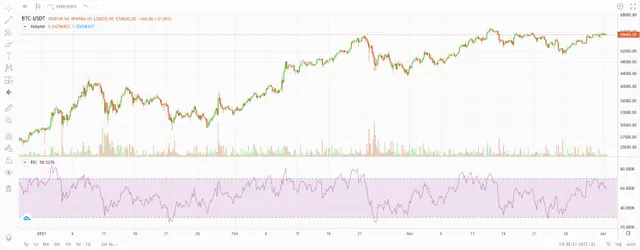
- Bollinger Bands (BB)
John Bollinger developed this indicator. Bollinger bands indicate whether the market has high or low volatility and overbought and oversold conditions.This indicator consists of an upper band, a middle band, and a lower band. The middle band is a simple moving average that is usually set at 20 periods.
Middle line: 20-day simple moving average (SMA)
Upper band: 20-day SMA + (20-day standard deviation x2)
Lower band: 20-day SMA – (20-day standard deviation x2)
The two outer bands expand (move away from the middle line) when volatility is high. When the bands are squeezed (move closer to the middle line), the volatility is low.
Generally, an asset is considered overbought when the price approaches (touch) the top Bollinger band and oversold when the price approaches (touch) the bottom band.
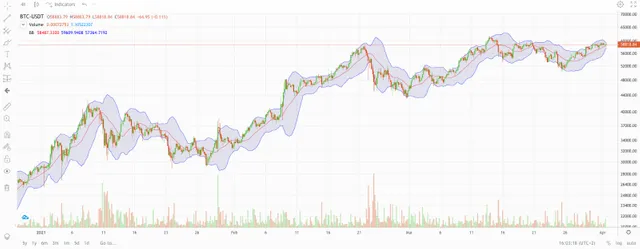
- The Moving Average Indicator
The Moving Average indicator is used to smooth price action over a given period. MA is a lagging indicator which means that it is based on previous price action.
There are two types of Moving Averages:
simple moving average (SMA)
exponential moving average (EMA)
SMA works to take the data for a certain period of time and shows the average price of this asset in that period. If SMA calculates an average based on 100 days, the entire data is continuously updated to include only the last 100 days. SMA also evaluates all price inputs equally. It did not matter when the data was entered (on day one or day 100).
EMA works similarly, but the formula is more complicated because EMA adds more value to the latest price inputs. More traders prefer EMA because it reacts more quickly to the reversals of trends.
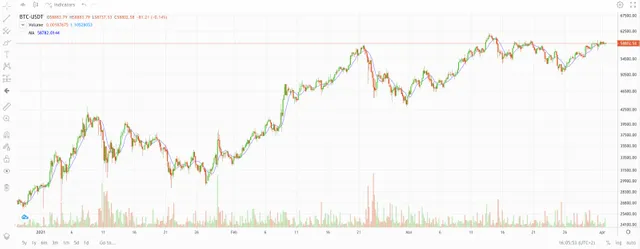
- Stochastic RSI (Stoch RSI)
Tushar S. Chande and Stanley Kroll developed this indicator. The Stochastic RSI is an indicator of an indicator.
It is a range-bound indicator, and its primary goal is to show crossovers and overbought and oversold conditions. This indicator calculates a value between 0 and 1 (or zero and 100), which is then presented as a line.
Formula: Stoch RSI = (RSI - Lowest Low RSI) / (Highest High RSI - Lowest Low RSI)
An asset is typically considered oversold when the Stoch RSI drops below .20 and overbought if the RSI goes above .80. (On the zero to 100 scale, below 20 is oversold and above 80 is overbought.)
Compared to the Relative Strength Index, StochRSI moves very quickly from overbought to oversold, or vice versa, while the RSI is a much slower-moving indicator.
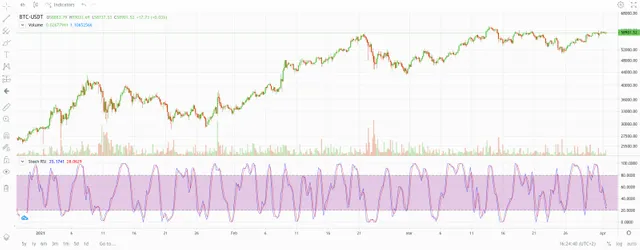
- Stochastic RSI (Stoch RSI)
Tushar S. Chande and Stanley Kroll developed this indicator. The Stochastic RSI is an indicator of an indicator.
It is a range-bound indicator, and its primary goal is to show crossovers and overbought and oversold conditions. This indicator calculates a value between 0 and 1 (or zero and 100), which is then presented as a line.
Formula: Stoch RSI = (RSI - Lowest Low RSI) / (Highest High RSI - Lowest Low RSI)
An asset is typically considered oversold when the Stoch RSI drops below .20 and overbought if the RSI goes above .80. (On the zero to 100 scale, below 20 is oversold and above 80 is overbought.)
This indicator was developed by a financial analyst Goichi Hosoda. The basic use for this indicator is to determine the support/resistance levels and trend direction.The Ichimoku Cloud indicator consists of five lines, and each line is displaying averages over specific periods. You can determine how long these periods need to be.
The 5 lines are:
Tenkan-sen (Conversion Line)
Kijun-sen (Base Line)
Senkou Span A (Leading Span A)
Senkou Span B (Leading Span B)
Chinkou Span (Lagging Span)
The lines clearly show support/resistance and trend direction. When two lines intersect, the area between them is shaded and forms a “cloud.” If the price is below the cloud, it means that the trend is down. If the price is above the cloud, the trend is up.
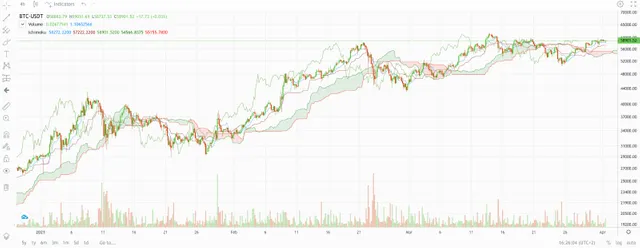
Technical indicators will give you some basic information about the future price movement, overbought and oversold conditions, trend reversals, etc.
Note that indicators do not do very well on their own, and we recommend that you combine different indicators with seeing what works for you.
Learning to trade with indicators can be a complex process. If a certain indicator appeals to you, you can research it even further.
The more you will practice, the more comfortable you will become with your trading.